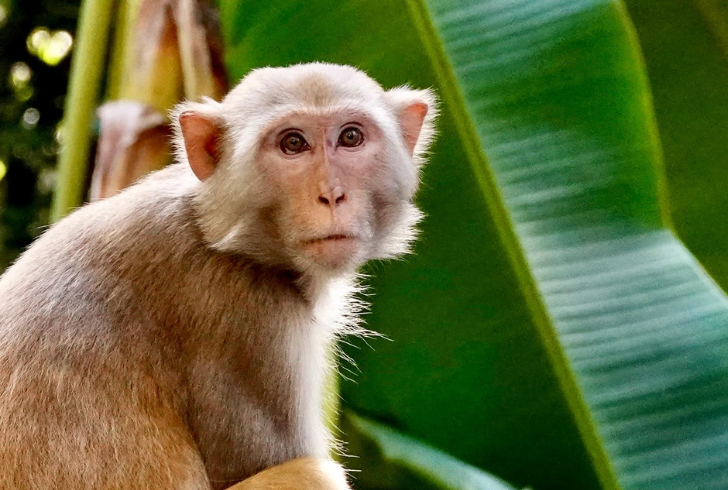
The Mystery of Human Body Parts That Science Still Can’t Solve

The human body is a patchwork of evolutionary choices, quirks, and mysteries. From skeletal structure to the tiniest gland, everything tells a story shaped by survival and adaptation. And yet, even after decades of research and fossil records, certain features remain puzzling — their purpose unclear, their origin debated.
Take the human chin, or the surprising size of testicles across primates—these seemingly minor body parts actually reveal just how complex and strange human evolution truly is.
How Evolution Built the Body in Pieces
Our bodies didn’t appear fully formed—they were assembled slowly over billions of years. Each major evolutionary leap added a new layer to the blueprint: animals developed bodies and guts; vertebrates got backbones and limbs; mammals gained hair and milk glands.
Later, primates came with features like fingernails and binocular vision. These layers show how species are interconnected, with each evolutionary branch adding its own upgrades.
Understanding when a body part appeared is fairly straightforward when comparing genetic and fossil data. But figuring out why something evolved—like why humans have a chin—is far more complicated. That’s where many theories stumble.
What Testicle Size Tells Us About Mating Strategies

Instagram | kym_clark | From large in macaques to small in colobus, monkey testicle size directly reflects their unique mating approaches.
Testicle size, as odd as it sounds, is a reliable clue to mating behavior across species. And the variation is massive. Some monkeys, like macaques, carry unusually large testicles for their size, while others, like colobus monkeys, have much smaller ones. This difference directly ties to how they mate.
In species where males face little competition for mates, like colobus monkeys, where one male dominates a harem, there’s no need to produce huge volumes of sperm. Fewer mates mean lower sperm competition. On the flip side, in highly promiscuous species like macaques, chimpanzees, and bonobos, males mate with multiple females, and females with multiple males.
The real competition happens inside the body, where sperm from different males battle it out. Bigger testicles mean more sperm, which increases the odds of reproduction.
Humans fall somewhere in the middle. Our testicle size, relative to body weight, isn’t as extreme as chimps but not as minimal as gorillas. It mirrors a more balanced sexual behavior—neither strictly monogamous nor entirely promiscuous.
The Role of Convergent Evolution
One way scientists test theories like these is by looking at convergent evolution—when the same feature appears in unrelated species. If similar mating systems repeatedly lead to larger testicles across different branches of mammals, that’s strong evidence of a pattern.
This method reveals a consistent link: in mammals, larger testicles typically show up in promiscuous species. Dolphins, for instance, have some of the largest testicles in the animal kingdom—up to 4% of their total body weight. That would be the human equivalent of carrying nearly 10 pounds of reproductive tissue. Spinner dolphins, observed in chaotic mass-mating rituals, perfectly illustrate this connection.
The Chin No One Can Quite Explain
The chin might be the most human feature of the body, and also the most mysterious. No other animal, not even our closest extinct relatives like Neanderthals, has a protruding chin like ours. And there’s no agreed-upon explanation for why it evolved.
Some theories argue the chin helps strengthen the jaw, which is useful in prehistoric hand-to-hand combat. Others think it has to do with speech development or changes in diet, especially after cooking softened our food and reduced chewing demands. There’s also speculation about sexual selection—perhaps chins made someone appear more attractive.
But without examples of convergence—no other species evolved a similar chin—it’s nearly impossible to test these ideas. Unlike testicle size, which shows repeatable patterns across different animals, the chin stands alone.
Why These Mysteries Matter

Freepik | Unanswered questions about evolution’s path are evident in body parts such as the human chin.
These unexplained features aren’t just academic curiosities. They offer insight into the subtle pressures that shape biology, from survival tactics to sexual behavior. They also show the limits of current evolutionary understanding. While DNA can map relationships and fossil records give physical timelines, some “why” questions still hover without resolution.
Body parts like the human chin remind us that evolution doesn’t always provide clear answers. Some features might be accidental leftovers; others might have served a purpose long lost. Understanding the body is not just about structure or function—it’s about history, adaptation, and sometimes, unanswered questions.
Some Answers Still Remain Out of Reach
Science has come a long way in explaining the form and function of the human body. But not every bone, gland, or ridge has a clear evolutionary story. Testicle size now seems easier to explain thanks to patterns observed across species. The chin, on the other hand, remains a stubborn enigma — unique to us, with no evolutionary twin to compare.
These unanswered questions don’t weaken evolutionary theory. They highlight its depth and its ongoing nature. The body holds many answers, but it also guards a few secrets.
More in Body
-
`
Ozzy Osbourne’s Most Shocking and Beloved Pop Culture Moments
Few figures in rock history have carved out a legacy as vivid and unpredictable as Ozzy Osbourne. Beyond his groundbreaking work...
August 10, 2025 -
`
Are Mono Diets Worth It – or Just a Dangerous Trend?
As summer brings on the pressure to slim down fast, the internet lights up with diet trends promising instant results. One...
August 3, 2025 -
`
Why Motivation Is Essential for Sustainable Fitness Success
Motivation isn’t something that shows up when it’s convenient—it’s something that needs to be built, shaped, and sustained. Many people struggling...
July 27, 2025 -
`
Why a Mediterranean Diet and Exercise Slow Bone Loss in Seniors
Bone health isn’t just a concern for the elderly—it’s something that starts to matter the moment the body begins to lose...
July 12, 2025 -
`
Want Better Memory? This Diet Could Help Keep Your Brain Sharp
Losing focus, memory lapses, or slower thinking—these aren’t just normal parts of aging. While cognitive changes do happen over time, lifestyle...
July 5, 2025 -
`
The Truth About Health Tracking Apps and Their Impact on Wellness
Scroll through social media or browse the App Store, and you’ll likely spot dozens of health tracking apps. They promise everything—from...
June 29, 2025 -
`
New Study Reveals Alzheimer’s Affects the Entire Body
Most people associate Alzheimer’s with memory loss and cognitive decline, assuming its impact stays confined to the brain. But new findings...
June 21, 2025 -
`
The One Simple Habit Mark Cuban Credits for His Success
Success doesn’t come from shortcuts or luck—it’s built on habits that stand the test of time. Mark Cuban, the outspoken billionaire,...
June 14, 2025 -
`
Thinking of a Detox Diet? Read This Before You Start
Detox diets continue to be one of the most talked-about trends in the wellness space. Whether it’s juice cleanses, tea plans,...
June 8, 2025









You must be logged in to post a comment Login